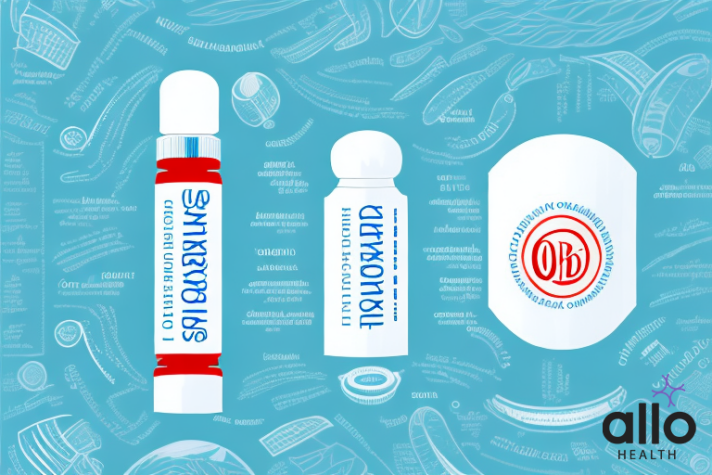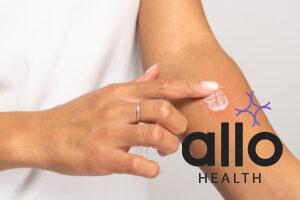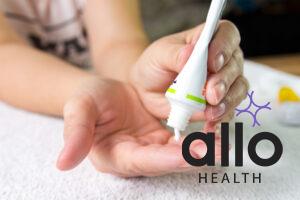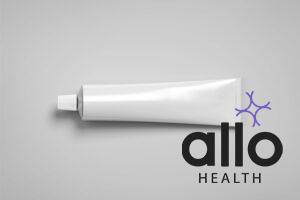The Benefits of Using Clobetasol Propionate and Salicylic Acid Ointment

"The following blog article may discuss medical treatments and interventions. However, it is important to note that the information provided is for general educational purposes only and should not be considered as a substitute for professional medical advice, diagnosis, or treatment. Always seek the guidance of a qualified healthcare professional for personalized medical advice.
Book consultation
Medical treatments are complex and should be tailored to individual circumstances. The information presented in this blog may not be applicable to everyone, as each person's medical condition, history, and needs are unique. Only a qualified healthcare professional can evaluate your specific medical situation, consider relevant factors, and provide appropriate recommendations for diagnosis, treatment options, and monitoring.
It is crucial to note that self-diagnosis, self-medication, or relying solely on the information provided in this blog for treatment decisions can have serious health consequences. "
For those suffering from skin conditions such as psoriasis and eczema, finding relief can feel like a never-ending battle. Many topical treatments are available, but not all are created equal. One potent combination that has been gaining popularity is clobetasol propionate and salicylic acid ointment. In this article, we will delve into the benefits of this potent combination and explore everything you need to know about this effective ointment.
What is Eczema?
Eczema, also known as atopic dermatitis, is a chronic skin condition characterized by inflammation, itching, and the development of red, dry, and often scaly or crusty patches on the skin.
Eczema is not contagious, but it can be uncomfortable and sometimes painful. Symptoms of eczema can vary from person to person, but common symptoms include:
- Itching: Itchy skin is one of the hallmark symptoms of eczema. The itching can be intense and persistent, leading to scratching, which can further exacerbate the condition.
- Redness: Affected areas of the skin typically become red or inflamed, giving them a distinct appearance.
- Dryness: Eczema often causes dry skin, which can become flaky and rough.
- Scaling or Peeling: The skin may develop scales or begin to peel, especially during flare-ups.
- Crusting: In some cases, eczema can lead to the formation of crusts or scabs on the skin.
- Swelling: The affected areas may become swollen or puffy.
- Blisters: Eczema can cause tiny fluid-filled blisters that may ooze and then crust over.
- Thickened Skin: Over time, chronic eczema can lead to the skin becoming thicker and tougher, a condition known as lichenification.
- Open Sores: Scratching the itchy skin can lead to open sores or areas of broken skin.
- Pain: In severe cases, eczema can be painful, especially if the skin becomes cracked and open.
Eczema symptoms can vary in severity and may come and go in flare-ups. The condition can affect different parts of the body, including the face, hands, feet, and flexural areas (such as the inner elbows and behind the knees).
While eczema can be chronic and persistent, it is manageable with proper skincare, lifestyle adjustments, and medical treatment when necessary.
If you suspect you have eczema or are experiencing any of these symptoms, it’s essential to consult a healthcare provider for an accurate diagnosis and appropriate management.
What is Psoriasis?
Psoriasis is a chronic autoimmune skin condition characterized by the rapid buildup of skin cells. This buildup results in the formation of thick, silvery scales and red patches on the skin.
Psoriasis can affect any part of the body, and it often goes through cycles of flare-ups and periods of remission. Symptoms of psoriasis can vary in severity, but common symptoms include:
- Red Patches: Psoriasis typically presents as raised, red patches of skin that may be covered with silvery scales. These patches are often well-defined and can vary in size.
- Thickened Skin: Over time, affected skin areas may become thicker and tougher. This is known as plaque psoriasis and is the most common form of the condition.
- Silvery Scales: The red patches are often covered with a layer of silvery-white scales that may flake off.
- Itching: Psoriasis can be intensely itchy, which can lead to scratching and potential skin damage.
- Burning or Soreness: Some individuals with psoriasis report feelings of burning or soreness in affected areas.
- Dry Skin: Psoriasis can cause dry skin that may crack and bleed.
- Nail Changes: Psoriasis can affect the nails, causing pitting (small dents or depressions), thickening, and discoloration.
- Joint Pain: In some cases, psoriasis can lead to psoriatic arthritis, which causes joint pain, stiffness, and swelling.
- Inverse Psoriasis: In skin folds or creases, such as the armpits, groin, and under the breasts, psoriasis may appear as smooth, red patches without scales.
- Guttate Psoriasis: This form of psoriasis appears as small, red spots, often triggered by an infection like strep throat.
- Pustular Psoriasis: A less common form, pustular psoriasis, causes white pustules surrounded by red skin and can be painful.
- Erythrodermic Psoriasis: This severe form of psoriasis can cause widespread redness, peeling, and swelling, often requiring immediate medical attention.
Psoriasis symptoms can vary widely from person to person, and the condition’s severity can also change over time. It’s important for individuals with psoriasis to work with a healthcare provider to manage their symptoms effectively and find appropriate treatment options tailored to their specific needs.

What is Clobetasol?
- Clobetasol is a potent corticosteroid that plays a crucial role in alleviating skin conditions like eczema and psoriasis.
- It functions by inhibiting the production of specific chemical messengers known as prostaglandins. These prostaglandins are responsible for skin redness, swelling, and itching.
What is Salicylic Acid?
- Salicylic Acid is a keratolytic medicine that serves to break down keratin clumps, remove dead skin cells, and soften the skin.
- Additionally, it enhances the absorption of Clobetasol into the skin, making it more effective in addressing skin concerns.
How Does Clobetasol + Salicylic Acid Work?
The combination of Clobetasol and Salicylic Acid is effective in treating skin conditions due to their complementary actions:
- Clobetasol inhibits prostaglandins, reducing skin inflammation and itching.
- Salicylic Acid breaks down keratin and exfoliates dead skin cells, promoting the penetration of Clobetasol and enhancing its efficacy.
Benefits of Clobetasol Propionate and Salicylic Acid Ointment:
Clobetasol + Salicylic Acid offers several advantages in managing skin conditions such as eczema and psoriasis:
- Reduces redness and swelling.
- Relieves itching and discomfort.
- Promotes the removal of dead skin cells.
- Enhances the absorption of Clobetasol for improved results.
Potential Side Effects:
Common side effects of Clobetasol Propionate and Salicylic Acid Ointment may include:
- Burning sensation
- Irritation
- Itching
If you experience severe or persistent side effects, consult your doctor about medication.

Dosage Instructions:
To ensure the effective and safe use of Clobetasol Propionate and Salicylic Acid Ointment:
- Apply a thin film to affected areas two or three times daily, or as directed by your doctor.
- Avoid covering treated areas with airtight dressings unless advised by a doctor, as this may increase the risk of side effects.
- After application, wash your hands unless your hands are the treated area.
- Use a mild moisturizer regularly to combat skin dryness during treatment.
Safety Instructions:
Long-term usage of Clobetasol Propionate and Salicylic Acid Ointment should be approached with caution, as it may pose a risk of adrenal gland problems. Consider discontinuing this medicine and consult your doctor, if you experience symptoms such as:
- Blurred vision
- Dizziness
- Irregular heartbeat
- Increased thirst or urination
- Irritability
- Unusual weakness
Drug Interactions:
Clobetasol Propionate and Salicylic Acid Ointment may interact with various drugs, affecting its efficacy. Some potential interactions include:
- HIV medicines (e.g., ritonavir)
- Medications for fungal infections (e.g., itraconazole)
- Heart attack medications (e.g., aspirin)
- Antidepressants (e.g., Cymbalta)

Drug-Food Interaction:
Inform your doctor if you are taking homeopathic, ayurvedic, Unani, or over-the-counter items, as they may interact with Clobetasol Propionate and Salicylic Acid Ointment.
Drug-Disease Interaction:
Certain diseases, such as diabetes, diaper rash, infections, and ocular toxicities, may interact with Clobetasol Propionate and Salicylic Acid Ointment.
Key Takeaways:
- Eczema and Psoriasis Relief: Clobetasol Propionate and Salicylic Acid Ointment is an effective combination for managing skin conditions like eczema and psoriasis, alleviating itching and inflammation.
- Eczema Symptoms: Eczema, also known as atopic dermatitis, includes symptoms like itching, redness, dryness, scaling, crusting, swelling, blisters, thickened skin, open sores, and pain.
- Psoriasis Symptoms: Psoriasis is characterized by red patches with silvery scales, itching, burning, dry skin, nail changes, joint pain, and various forms of the condition.
- Clobetasol and Salicylic Acid: Clobetasol is a corticosteroid that reduces skin inflammation, while Salicylic Acid exfoliates dead skin cells and enhances Clobetasol’s absorption.
- Benefits: This combination ointment reduces redness, swelling, itching, and discomfort, promotes dead skin cell removal, and enhances medication absorption for improved results.
- Safety and Interactions: Long-term usage should be cautious due to potential adrenal gland problems. Be aware of potential drug interactions, especially with HIV medicines, fungal infection medications, heart attack medications, and antidepressants. Discuss any use of homeopathic or over-the-counter items with your doctor. Diseases like diabetes and ocular toxicities may also interact with the ointment.
Frequently Asked Questions
Q: What is Clobetasol Propionate and Salicylic Acid Ointment used for?
A: This ointment is used to treat skin conditions like eczema and psoriasis. It reduces inflammation, itching, and discomfort associated with these conditions.
Q: How does Clobetasol Propionate and Salicylic Acid ointment work?
Clobetasol Propionate, a corticosteroid, reduces skin inflammation, while Salicylic Acid exfoliates dead skin cells and enhances the absorption of Clobetasol, making it more effective.
Q: Is this ointment available over-the-counter, or do I need a prescription?
A: Clobetasol Propionate and Salicylic Acid Ointment typically requires a prescription from a healthcare provider due to its potency. It’s essential to consult a doctor for an evaluation before using it.
Q: Can I use cosmetics or skincare products alongside this ointment?
A: It’s best to consult your doctor before using other skincare products or cosmetics while using this ointment. Some products may interact with it or exacerbate skin sensitivity.
Q: Can I expose the treated skin to sunlight or UV light during treatment?
A: It’s generally advisable to avoid excessive sun exposure and tanning beds while using this ointment, as it can increase the risk of skin sensitivity and sunburn. Always follow your doctor’s recommendations regarding sun exposure.







































